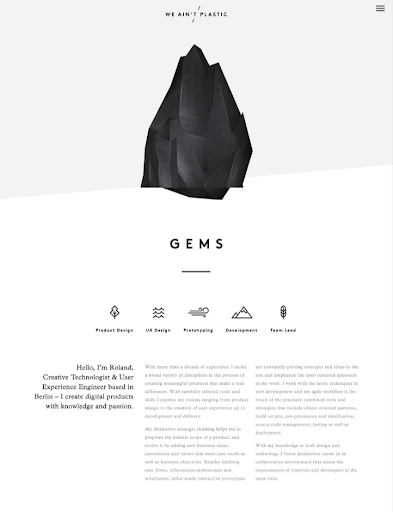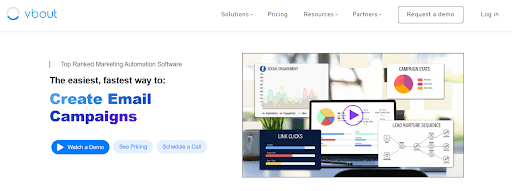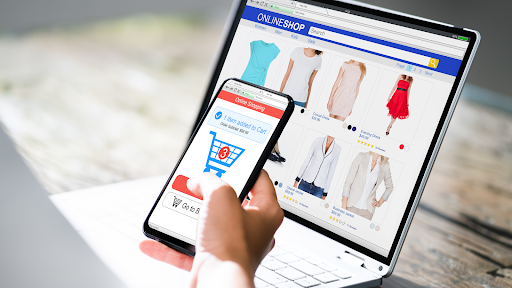Regardless of how niche your portfolio may be or how large-scale your company is, optimizing your website’s UX is essential for international success. User Experience design (UX) is one of the most important web design pillars of the modern era and it can make or break your business model in 2022.
According to Small Biz Genius, 88% of people won’t come back to a website after poor UX, with only 55% of companies conducting UX testing. There is a disparity between what customers want and what companies are currently providing, leaving plenty of room for you to climb to the top. Let’s take a look at how you can improve the UX of your website’s content and help it gain some much-needed momentum with your leads.
Benefits of Website Content UX Improvement
UX is at the heart of your brand experience for people interacting with your content. This goes for any piece of content under your company’s banner, be it website, mobile app, product, etc. Websites are the most pivotal elements of UX because of their accessibility. People are far more likely to engage with your website before they do with your services, for example.
According to Tech Jury, 52% of users don’t return to websites due to poor aesthetics, with 74% to return if the site has good mobile UX. With 79% of users going to other websites if they don’t find what they’re looking for on the first one, it’s clear why UX is essential. Here’s why you should pay closer attention to your UX improvement:
- Make your content more accessible and shareable
- Increase the rate of lead engagement and conversion
- Improved interactivity and appeal of your content
- Increase audience loyalty and retention
- Improve load times and SEO ranking of your pages
- Make it easier to expand and build on solid UX foundations
How to Improve the UX of your Content
1. Never Create Content Ad Hoc Without Planning
Creating content for the sake of publishing “something” is always a bad idea. Whether you are a blogging website or a SaaS provider who occasionally publishes content, make sure never to publish ad hoc. Ad hoc content marketing, and by extension UX design, refers to creating copy, graphics, and other UX elements without a plan in hand. By relying on ad hoc content
creation, you will have no clear overview of which metrics to track or how consistent you are in creating new content.
A great example of ad hoc marketing is a blogger who writes opinion pieces and essays to publish on their website. They only occasionally create content and don’t need to think about “the bigger picture”. On the other hand, a large website dedicated to a company or an agency needs a long-term marketing plan, thus avoiding ad hoc web design or content marketing altogether.
The best way to start planning for new content is to check out sites like Google Trends and Google Keyword Planner beforehand. Always research “what” it is that your target audience would like to see from you before you start writing. You should also use Google Calendar or a similar planning tool to space out your content publishing. Take a more deliberate, systematic approach instead of rushing into SEO improvement and UX design.
You can make a first impression once, so focus on creating something worthwhile for leads who will discover your website through organic search results. For example, you can create pillar content or multi-part series of articles on your website which will keep your leads coming back for more content organically. This is a great UX design step that would reduce your bounce rate and increase your lead generation rates over time.
2. Use H Tags Throughout your Website
No matter what your business model looks like or the type of content you produce, using H tags in your web design is critical. Whether you’re using Elementor, WP Page Builder, or simply rely on WordPress and its core editor, use H tags on each page you publish.
Remember to assign a single H1 tag as the title of your page, with H2 and subsequent tags being used for headings, subheadings, and lists. This will make your site easier to read for actual visitors, while also letting web crawlers understand your pages better. As a result, not only will your visitors convert into subscribers or customers, but your pages’ SEO will also improve. This is a core component of web page UX improvement as content formatting is as important as the content itself.
3. Always Proofread Content Before Publishing It
Grammar mistakes, lack of formatting, and writing errors are major red flags for people visiting your website for the first time. Whether you run an eCommerce store or blog constantly, it’s pivotal that you double-check everything you write before publishing it.
This can be done either by manually reviewing each piece of writing you produce or by using a reliable writing service with professional writers. Whether you think “Please help me write my thesis.” or want to work with a writing service on your articles and marketing content, don’t hesitate. Reach out to a professional platform and enlist the help of an expert writer or editor to help spruce up your website content. Doing so will dramatically affect the UX of your website’s content and make it far more legible and appealing for first-time and recurring visitors.
4. Optimize your Multimedia for Faster Loading
Website content extends toward other types of media apart from writing. Videos, images, audio files, and animation all play a part in your site’s overall UX. The reason for this is that it takes longer for pages to load if there are multimedia items present on them. Sites which rely solely on text however are unappealing and lack the visual hook necessary to retain visitors.
You can raise your site’s UX by optimizing each piece of multimedia properly before uploading it to your CMS. Lower each content piece’s resolution and size without sacrificing the visual quality too much. There are a few ways to do this manually.
Set your images to 72p in whichever image editor you’re using and export them as PNG files. Use Tiny PNG, Kraken, or Image Recycle if you lack professional software like the Adobe Suite. Reduce the resolution of your videos to 720p or lower for direct uploads to your website. Use Veed, Clideo, or Media.io to reduce your video files’ size if you lack professional editing software. CMS solutions like WordPress will apply some form of compression if you upload large files but you can do a much better job if you do it by hand.
Also, make use of external hosting platforms like YouTube, ImageShack, and similar ones to link content back to your website without uploading it directly. This is a great solution if you want to reduce your server’s load. Not only will you benefit from multimedia existing on your site but you’ll avoid lowering your pages’ load times unnecessarily.
5. Integrate Both Internal and External Links
Focusing solely on your website without giving credit to anyone else might be a bad UX move on your part. People want to visit pages that can provide them with quality content and long-term value. You can achieve this effect by using both internal and external links in your publications.
Internal links can be used to redirect your visitors to other important parts of your site, like your storefront, other articles, etc. External links can be used for trustworthy data sources, Wikipedia articles, and similar non-competitive resources. Mixing internal and external links in your content will drastically improve its UX appeal and bolster your brand image as a worthwhile website
6. Collect Customer Feedback
Once your new UX strategy is underway, you’ll want to find out how people are reacting to the changes you’ve made to your web design and content approach. This can be done in several ways, the most popular and fastest being via email list surveys. When you collect emails from people who subscribed to your newsletters or bought products from your website, you can add them to your email list.
This list can be used not only for marketing purposes but also to collect valuable feedback, testimonials, suggestions for future products/content, etc. Use Google Forms or a similar online tool to create rudimentary surveys and attach them to your emails. Ask your customers how satisfied they are with your new UX design, whether you’re meeting their expectations, what you can improve, etc. This data is invaluable because you’ll find out how your new design and formatting solutions are performing from first-hand sources.
7. Follow the Latest Design Trends
As you create more and more content for your website, you’ll want to present it in the right way to make it more appealing. This is where design trends come into play, as you can follow industry trends to make your content more approachable and professional-looking. Here are a few worthwhile trends to apply to your website’s UX design:
- Embrace white space in your web page composition
- Use extra-large typography to emphasize titles, calls to action, etc.
- Rely on minimalism over an abundance of colors and multimedia
- Use carousels, one-page design, and other modern webpage functions
- Limit your color selection to a select few hues suitable for your branding/logo

By following the latest trends in web and UX design, you’ll be able to compete with other brands more easily. Likewise, any cold leads that come across your landing pages will be more inclined to stick around due to how appealing and engaging your website is.
8. Be Consistent in your Branding
Speaking of consistency, all of your web pages must look as if they are a part of a whole. This means you should use the same fonts, hues, and graphics style across every page on your website. This effect can be achieved by creating a style guide for your brand and sticking to it going forward. A style guide is a useful document that anyone who creates content for your website from then on can use as a reference.
The main points of interest you should set in stone for your branding include the aforementioned color palette, font family, as well as the style of graphics you will use. While some brands prefer vector graphics, others rely on illustrations, 3D art, or even professional photography for their website content. Be consistent and the UX design of your website content will achieve the effect of convincing visitors to convert into leads for your brand.
9. Use Attention-Grabbing Visuals and Graphics Elements
One of the most important elements of your UX design represents a combination of text and multimedia – calls to action. Calls to action are a traditional marketing tool used to direct the audience’s attention to certain actions. Commonly used examples of CTA in web design include “Subscribe Now” or “Contact Us Now”, which will give the visitor a clear course of action. The best way to use CTAs in your web design is to make sure they display in contrasting colors compared to the rest of your UI, or by assigning a hover effect to them. This depends on your site’s theme, so explore your options before making the final call.
In the example of VBOUT, we’ve used “Watch a Demo”, “See Pricing”, and “Schedule a Call” as calls to action prominently displayed on the home page. Combined with other high-quality visual elements, calls to action are meant to convince people to act now instead of later when they visit your site. You should use several different calls to action to increase the odds of people acting on your calls but also not too many as to not appear as spam. Using 3-5 calls to action per page should do it, as more than that may have adverse effects on your site’s overall UX appeal.

Conclusion
SaaS is not just limited to the IT field and becoming the leader of all the fields of businesses. Individuals and small enterprises are also preferring SaaS because of its time-saving functionality and impressive features. With that, everything is going digital, it becomes necessary to adopt these digital changes so that we can move towards a more advanced world.
It is only possible through developing more advanced technology in SaaS. So, we have mentioned all the trends that will rule the SaaS industry this year, i.e., in 2022.
To Sum Up
Investing time and resources into your website content’s UX is always a net positive, regardless of how niche your site may be at the moment. If your content is well-designed, optimized for fast loading, and caters to your target audience’s needs, you won’t have conversion issues to think about.
Work on improving how you present your digital marketing and website content, how you create it, and how you optimize it in 2022. Think “value” before you think “sales”, and both B2C and B2B leads will be more enticed to engage with your content than before.
Author's bio
Jessica Fender is a professional content creator, copywriter, and editorial manager on several content writing projects, such as TrustEssay. Her experience in digital marketing and professional development has enabled her to write better articles, essays, and case studies on these topics. Jessica enjoys reading personal development lit and listening to podcasts.
Don’t forget to share this article


